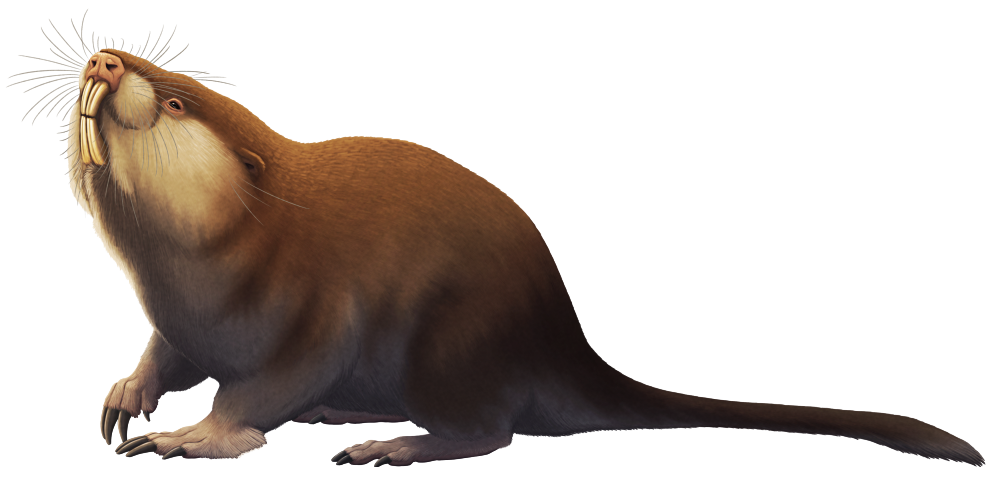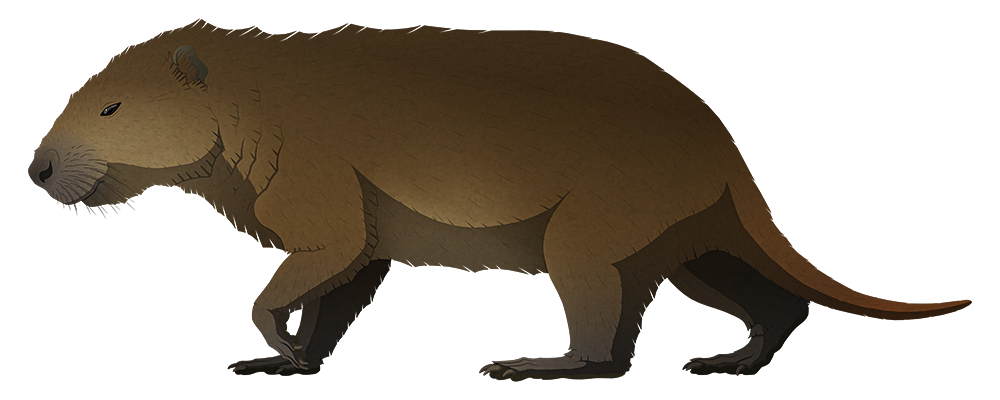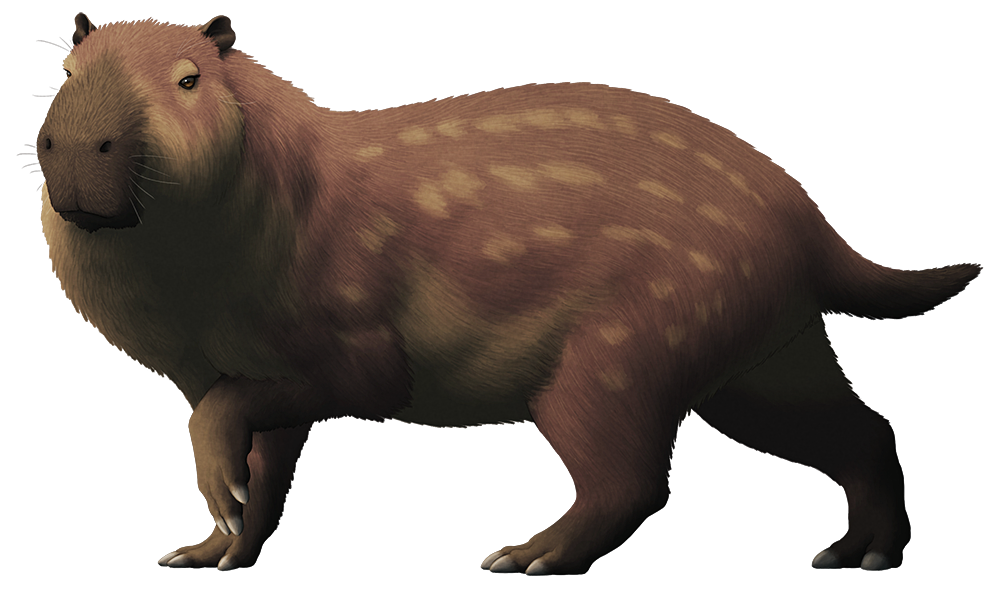Okay, let’s finish up this year’s round of speculative evolution concepts with one last post before we get back to normal paleoart content.
(…what do you mean it’s November 3rd? how did that happen?)
Belial Lyka asked for a “marine proboscis monkey with a somewhat buoyant nose”:
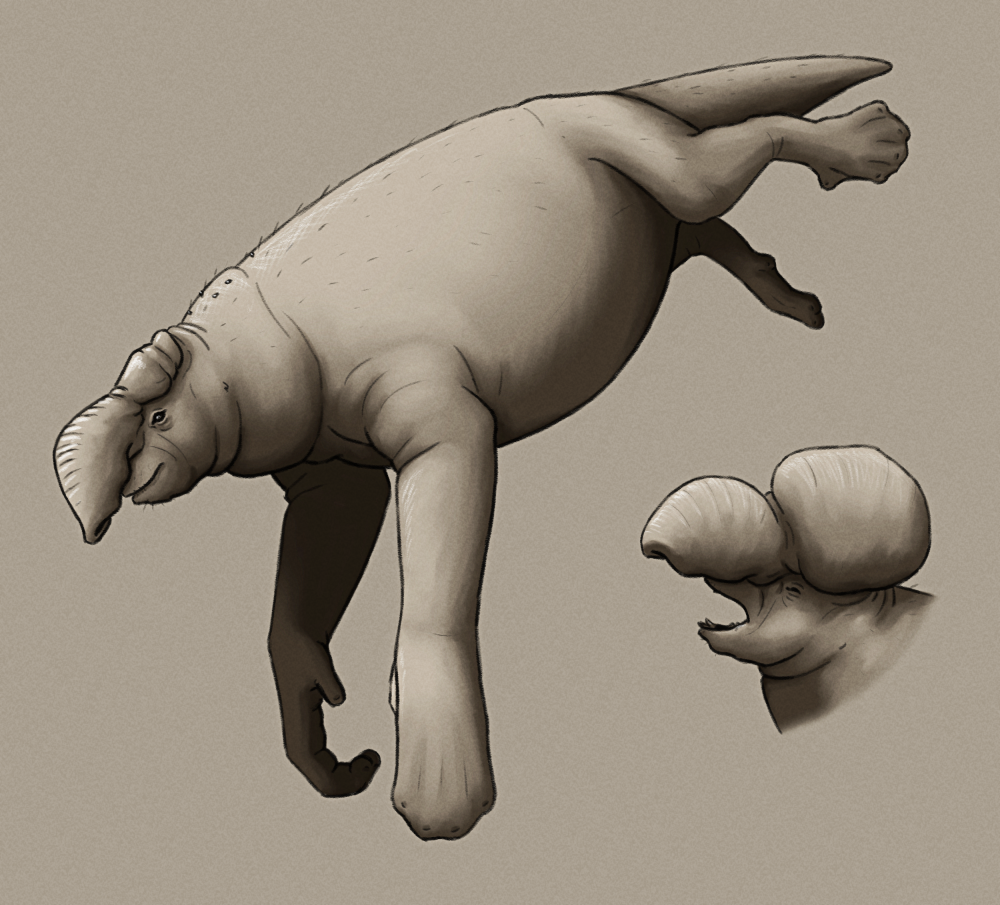
A descendant of modern proboscis monkeys, Phusarhinus beliallykae is a large semiaquatic primate found in shallow marshy coastal areas of what was once Southeast Asia. Around 4m long (~13′) it has a lifestyle somewhat similar to ancient early sirenians, feeding on soft aquatic plants and hauling out onto land to rest.
Its dense rib bones and long flipper-like grasping forelimbs make it rather front-heavy, allowing it to naturally float with its head and arms hanging down closer to the bottom for energy-efficient foraging. When it needs to resurface to breathe it shunts air from its lungs into its large inflatable nasal sacs, altering its buoyancy enough to tip its head back up towards the surface.
Unlike its ancestors the elaborate nasal structures are found on both males and females – although they’re more brightly colored in males and are also used for visual courtship displays and as resonating chambers for loud booming calls.
And somebody who only gave their name as “bunny” suggested a “parasitic rodent”:
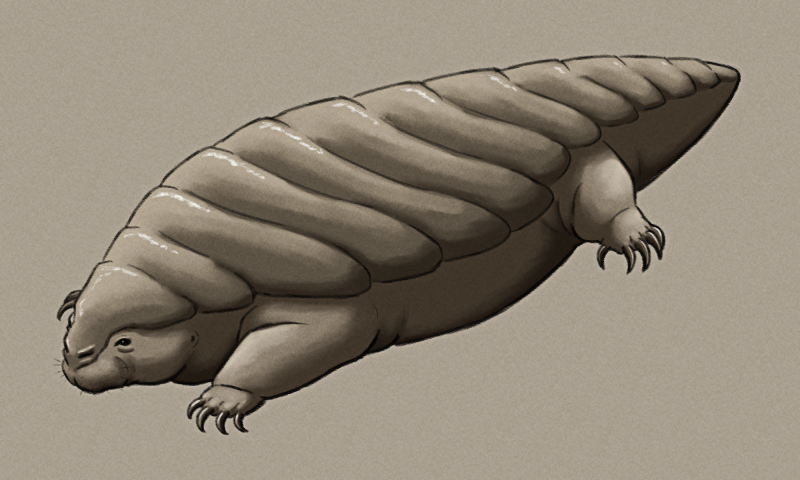
Sanguichelonamys bunnyi is a highly unusual descendant of a rakali-like semiaquatic rodent that had a symbiotic relationship with early members of the Phusarhinus lineage. The rodents initially just removed algae and external parasites from the bodies of the increasingly bulky aquatic monkeys, but things have recently started to turn more parasitic.
At just 3cm long (~1.2″) Sanguichelonamys is one of the smallest mammals to ever exist, with a wide flattened body and sharp hooked claws used to cling onto its host monkey’s thick skin. Although it still does remove other parasites, during haul-out periods it will also use its sharp incisors to deliberately enlarge the wounds left behind – or even open up new ones – and directly feed on fresh blood from its host.
The thickened keratinous skin along its head and back has a specialized hydrophobic surface that traps a layer of air while underwater, acting as a “rebreather” bubble similar to that of water anoles. Along with the ability to drastically slow down its metabolism and respiration rate, this allows Sanguichelonamys to survive being submerged during its host’s lengthy foraging dives.

